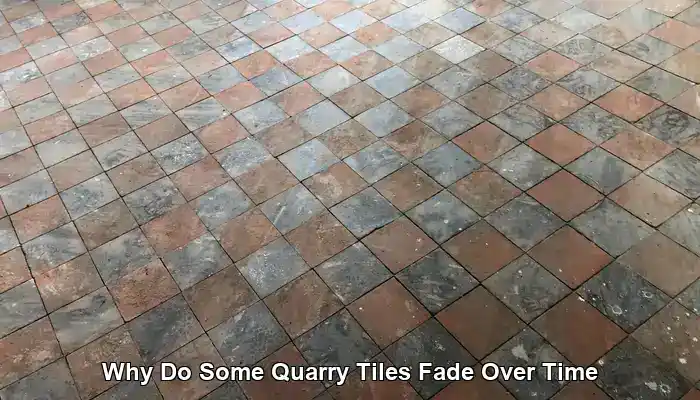
quarry tiles are highly regarded for their exceptional durability, earthy aesthetic, and timeless elegance. These versatile tiles are commonly found enhancing rustic kitchen floors or providing a solid foundation for sunlit patios. Their robust, unglazed ceramic composition makes them capable of withstanding heavy foot traffic and adverse weather conditions. However, over time, many homeowners and property managers notice a troubling fading of color—sometimes this fading appears uneven, while at other times it is quite pronounced. This gradual change can be perplexing, especially when tiles that once displayed vibrant reds, warm browns, or deep terracotta hues begin to look washed out, patchy, or dull.
The gradual fading of quarry tiles is not solely a cosmetic issue; it often indicates underlying wear, environmental strain, or chemical deterioration. When these tiles are laid outdoors, they continuously face harsh weather conditions—rain, frost, and fluctuating temperatures that gradually wear down their surfaces. The freeze-thaw cycle can create micro-cracks and surface spalling, revealing lighter inner layers that possess coarser textures. On the other hand, indoors, the scenario becomes equally complex but distinctly different. High foot traffic can slowly erode the tile’s pigmented surface, exposing the inner body, which may contain larger particles with varied mineral tones. This natural layering suggests that once the surface integrity is compromised, noticeable changes in color and texture can occur, resulting in an unsightly appearance.
In addition to the physical wear caused by foot traffic and environmental conditions, exposure to chemicals plays a significant role in the fading process. Strong cleaning agents, particularly those that are acidic or alkaline, can degrade sealers and strip away protective coatings. Over time, this increased vulnerability leads the tile to become more susceptible to staining, efflorescence (the formation of salt deposits that lighten the surface), and soil accumulation in the newly created pits and abrasions. Together, these factors contribute to a faded, uneven appearance that detracts from the original beauty and structural integrity of the tiles.
Gaining a comprehensive understanding of the causes behind the fading of quarry tiles is crucial for preserving their character and extending their lifespan. This detailed article will delve into the environmental, mechanical, and chemical factors that contribute to fading—both in indoor and outdoor settings—and offer practical tips for prevention and restoration. Whether you are maintaining a historic floor or simply striving to keep your tiles beautiful, this guide will help you grasp the intricate science behind the wear and tear of quarry tiles.
Expert Insights: Discover Our Top Recommendations for Daily Maintenance and Cleaning of Quarry Tiles
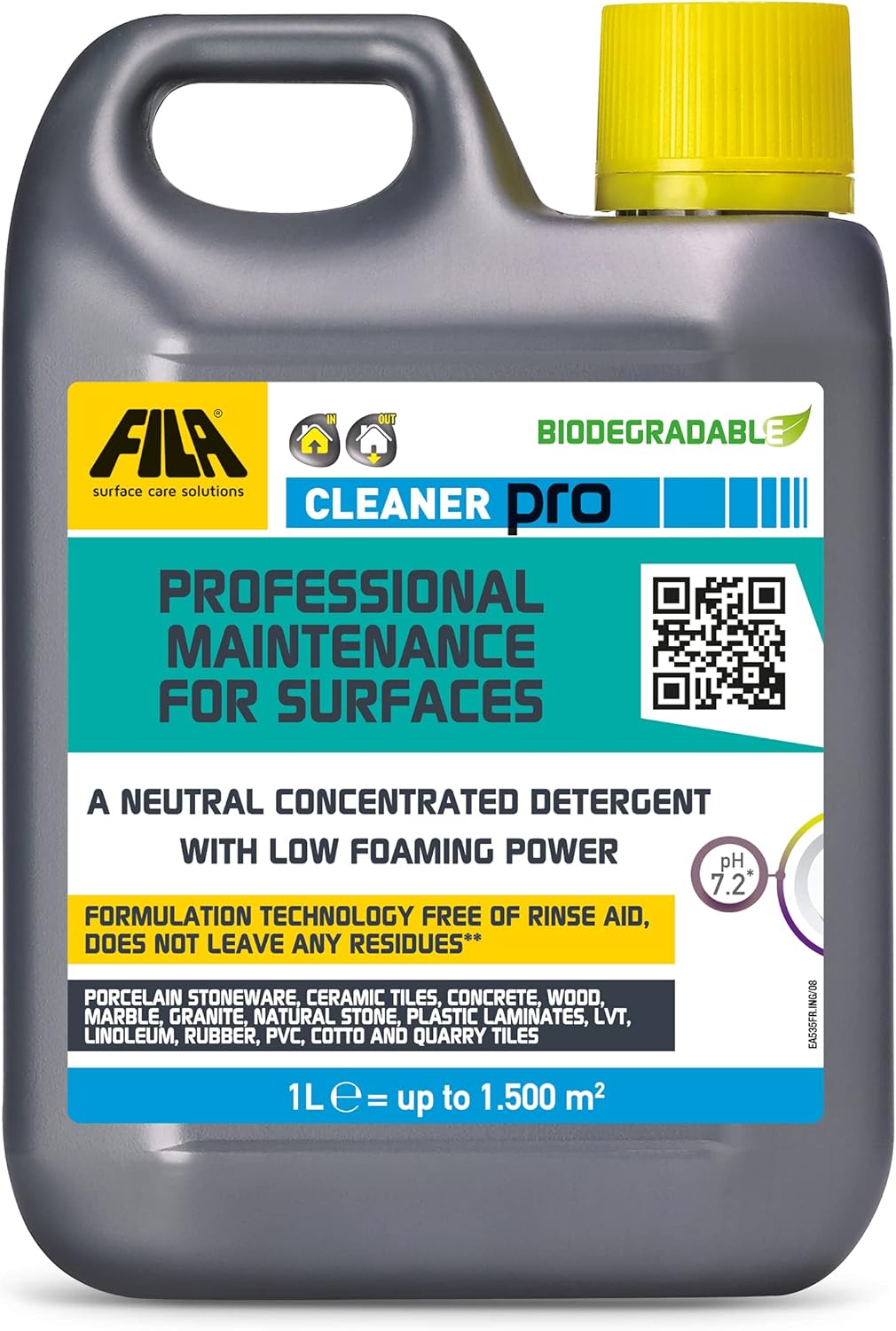
Fila Pro Floor Cleaner
|
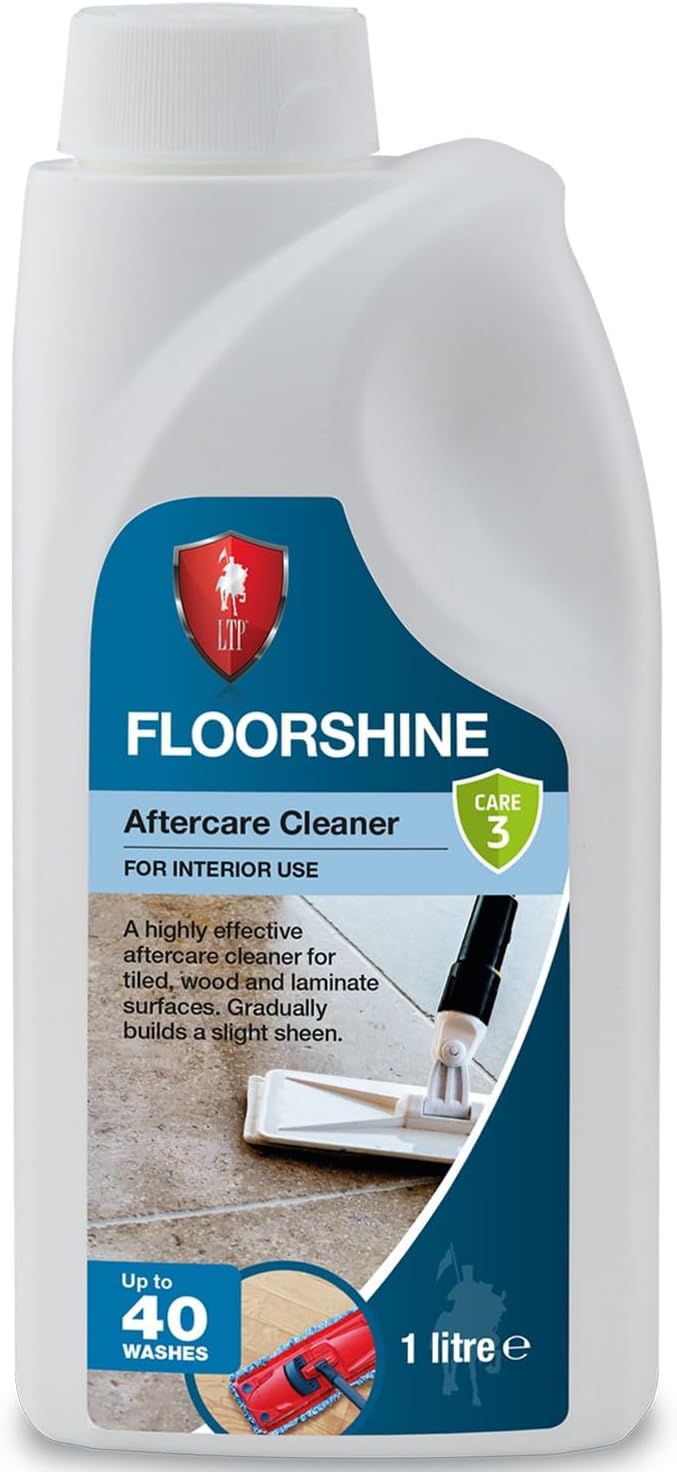
LTP Floorshine
|
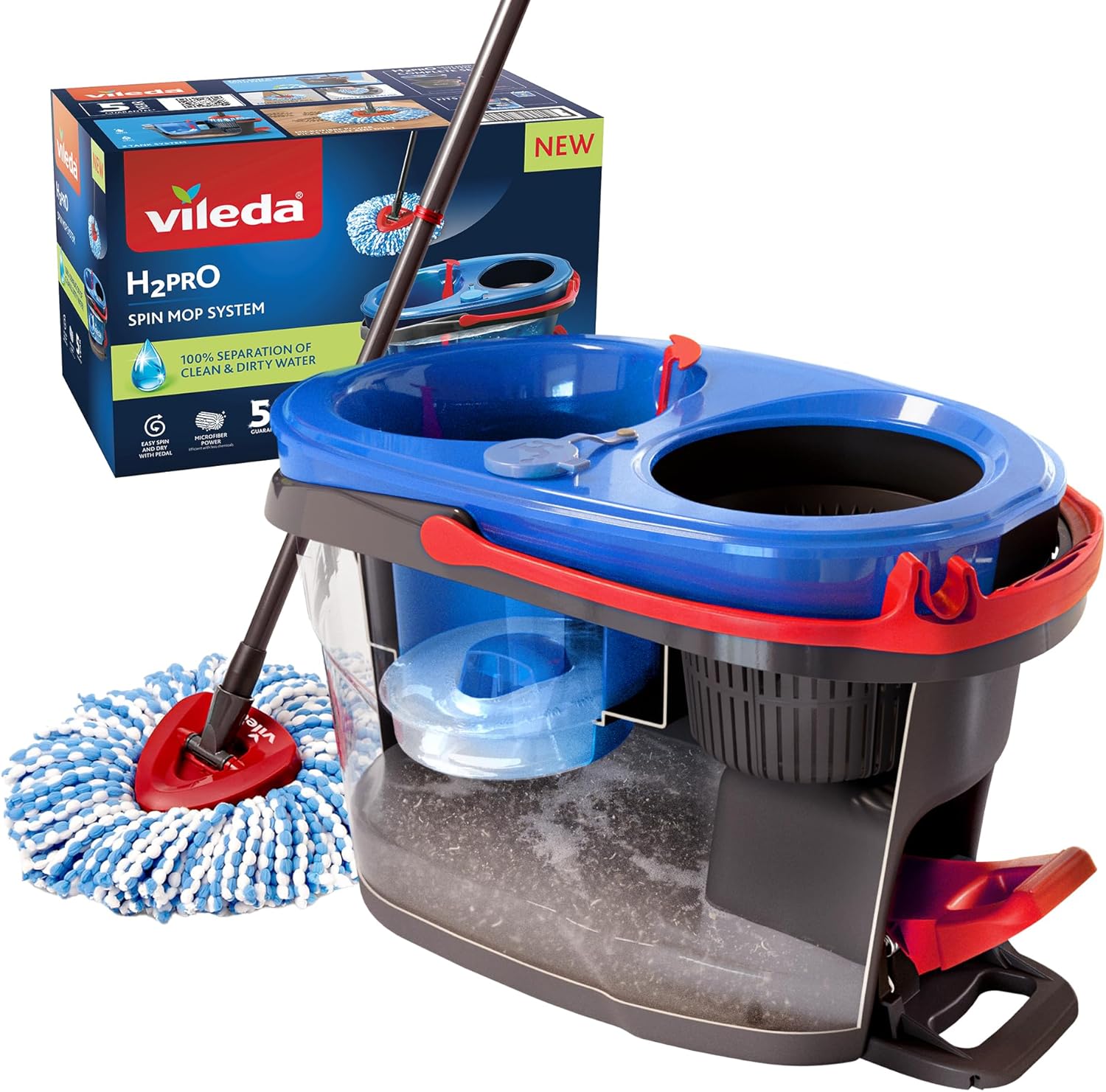
Vileda H2PrO Spin Mop System
|
Identifying the Outdoor Influences That Cause Quarry Tile Fading
Quarry tiles that are installed outdoors face a relentless barrage of environmental stressors that gradually erode their color and texture. Although these tiles are celebrated for their robustness, the unyielding forces of nature can wear down even the most resilient surfaces over time, resulting in a dull and lifeless appearance.
The Influence of Weather Patterns on Quarry Tile Color
One of the most significant factors contributing to fading is the weather, particularly the impact of rain and freeze-thaw cycles. Rainwater can infiltrate the porous surface of unsealed or poorly sealed tiles, transporting minerals and contaminants that can stain or leach color from the tile. When temperatures plunge, moisture trapped within the tile expands as it freezes, resulting in micro-cracks and surface flaking. This repetitive freeze-thaw cycle reveals the tile’s inner body, which typically contains lighter, less pigmented materials, leading to a significant reduction in vibrancy.
Examining Surface Wear and Layer Exposure in Quarry Tiles
Quarry tiles are generally constructed with a dense outer crust that holds the most vibrant color. As this outer layer wears away—due to foot traffic, abrasion, or environmental erosion—the inner layer becomes increasingly exposed. This inner layer is often rougher and features larger aggregate particles while exhibiting a lighter and more uneven hue. Consequently, this results in a patchy appearance that lacks the richness and depth of the original surface, significantly detracting from the overall aesthetic appeal of the tiles.
The Consequences of Chemical Damage on Quarry Tile Fading
Outdoor cleaning often necessitates the use of powerful chemicals to eliminate moss, algae, or grime. Unfortunately, these potent solutions can damage sealers and strip away protective coatings. Once the sealer is compromised, the tile becomes increasingly vulnerable to staining, mineral buildup, and accelerated wear. Over time, this chemical exposure significantly contributes to fading and dullness, diminishing the overall visual appeal of the exterior.
Investigating the Indoor Factors That Contribute to Quarry Tile Fading
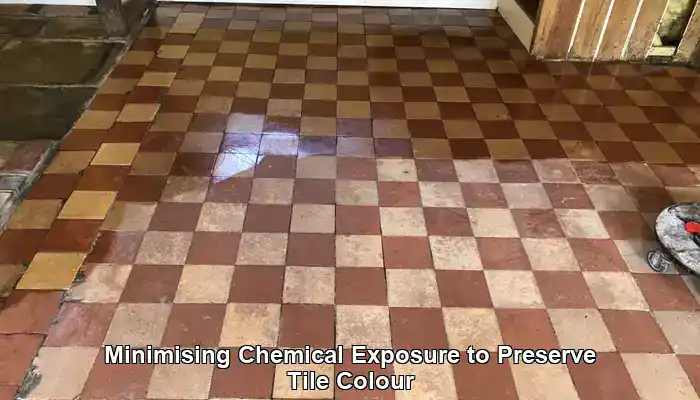
While outdoor quarry tiles contend with harsh environmental elements, indoor tiles face a unique array of challenges that can be equally damaging over time. From foot traffic to the cleaning routines employed, the fading of indoor quarry tiles often results from a slow, cumulative process driven by wear, surface breakdown, and chemical exposure.
Tackling Abrasive Wear and Loss of Crust in Indoor Quarry Tiles
Quarry tiles are designed with a dense, pigmented outer crust that provides their rich color and smooth finish. Inside, particularly in high-traffic areas such as kitchens, hallways, and commercial spaces, this outer layer gradually wears down. As the surface erodes, the inner body of the tile becomes exposed. This inner layer generally comprises larger mineral particles and has a more porous structure, leading to a noticeable shift in color and texture. Earth-toned tiles may begin to appear mottled or faded, with lighter patches emerging where the crust has thinned.
Addressing Surface Pitting and Soil Buildup in Quarry Tiles
As the surface degrades, micro-abrasions and pits start to form. These tiny indentations can trap soil, grease, and cleaning residues. Over time, the accumulation of grime in these pits can lead to uneven staining and a dull appearance. Even regular cleaning may not fully eliminate embedded dirt, resulting in a faded and blotchy look. This problem is particularly common in older floors that have not been adequately sealed or maintained, highlighting the critical need for regular upkeep.
Exploring Efflorescence and Mineral Migration in Quarry Tiles
Efflorescence represents another significant contributor to indoor tile fading. This phenomenon occurs when moisture beneath the tile migrates upward, carrying soluble salts to the surface. As the water evaporates, it leaves behind a white, powdery residue that lightens the tile’s appearance and can inflict surface damage. Efflorescence is especially prevalent in areas lacking proper subfloor ventilation or where tiles are set over damp concrete. If left untreated, it can compromise the tile’s surface and complicate cleaning efforts.
The Effects of Chemical Overuse and Sealer Breakdown on Quarry Tiles
Indoor cleaning routines frequently rely on potent chemical agents—especially in commercial or food preparation areas. While these products may effectively remove grease and stains, they can also strip away sealers and protective coatings. Once the sealer is compromised, the tile becomes more porous and susceptible to staining, wear, and further fading. Acidic or alkaline cleaners can even etch the surface, permanently altering its texture and color. Over time, repetitive exposure to harsh chemicals accelerates the deterioration of both the tile and its finish, worsening fading.
Crucial Maintenance Practices to Safeguard Quarry Tile Color
The fading of indoor quarry tiles is often preventable with the right care. Utilizing pH-neutral cleaners, adhering to a regular sealing schedule, and avoiding abrasive cleaning tools can significantly extend the life and visual appeal of the tiles. For older floors that show signs of wear, engaging professional restoration services—including deep cleaning, re-sealing, and color enhancement—can help revive their original beauty and restore their vibrancy.
Practical Prevention and Restoration Strategies for Quarry Tiles
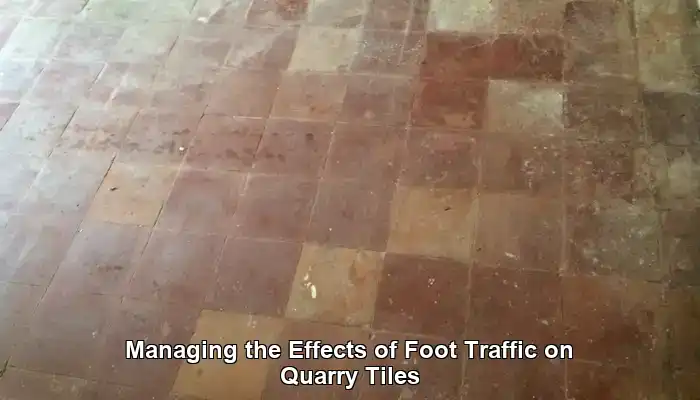
Understanding the reasons behind quarry tiles fading is only the first step; the real value lies in knowing how to prevent this fading and restore the original beauty when wear does occur. Whether your tiles are installed indoors or outdoors, proactive care and thoughtful restoration practices can significantly extend their lifespan and preserve their rich, earthy character.
Sealing as the Primary Defense Against Fading
One of the most effective approaches to preventing fading is through proper sealing. Quarry tiles are naturally porous, and without a protective barrier, they readily absorb moisture, dirt, and chemicals. A high-quality penetrating sealer fills the pores without forming a surface film, allowing the tile to breathe while repelling harmful contaminants. For outdoor tiles, this is particularly crucial for protection against rain, frost, and algae growth. Indoors, sealing helps resist staining caused by spills, cleaning products, and foot traffic.
Sealers should be reapplied periodically—typically every 1 to 3 years, depending on usage and environmental exposure. A simple water-drop test can help determine when resealing is necessary: if water soaks into the surface instead of forming beads, it’s time for a refresh to ensure optimal protection.
Smart Cleaning: Avoiding Harsh Chemicals for Quarry Tiles
Regular cleaning is essential, but the products you choose significantly impact tile longevity. Harsh chemicals, especially those that are acidic or alkaline, can degrade sealers and etch the tile surface over time. This degradation can lead to dullness, color loss, and increased vulnerability to staining. Instead, opt for pH-neutral cleaners specifically formulated for stone or tile surfaces. These products effectively lift dirt without compromising the integrity of the tiles.
For stubborn grime or efflorescence, use targeted treatments sparingly and always follow up with a thorough rinse. Avoid using bleach, ammonia, or vinegar-based solutions, which may appear effective but can cause long-term damage to the tile surface.
Maintenance Techniques to Protect the Color of Quarry Tiles
Regular sweeping and damp mopping are vital for preventing soil buildup and surface abrasion. Utilize soft-bristle brushes or microfiber pads instead of abrasive scrubbers, which can wear down the tile’s pigmented crust. In high-traffic zones, consider placing rugs or mats to minimize direct wear—particularly near entryways or kitchen workstations, where foot traffic tends to be heavier.
For outdoor tiles, pressure washing should be approached cautiously. While it can effectively clear surface dirt, excessive pressure might erode the tile or force water into cracks, potentially exacerbating freeze-thaw damage. If used, maintain low pressure and keep the nozzle at a safe distance to protect the integrity of the tiles.
Professional Restoration: Revitalizing Faded Tiles
When fading becomes apparent and routine maintenance proves insufficient, professional restoration can deliver outstanding results. Restoration experts employ a combination of deep cleaning, mechanical resurfacing, and color enhancement techniques to revitalize worn tiles.
- Deep cleaning effectively removes embedded dirt, grease, and mineral deposits using specialized equipment and solutions tailored for tile care.
- Mechanical honing or polishing smooths worn surfaces and restores texture, particularly on indoor tiles exhibiting surface pitting.
- Color enhancement sealers can enrich faded tones, especially in earth-toned tiles, by deepening the natural pigments without creating a glossy finish that may detract from their natural appeal.
In cases of severe wear, restoration may also involve regrouting, tile replacement, or applying protective coatings designed for the specific environment of the tiles.
Establishing a Long-Term Care Strategy for Quarry Tiles
Preventing future fading requires a comprehensive, long-term approach. Develop a maintenance schedule that incorporates regular inspections, cleaning, and resealing. Educate household members or staff about proper cleaning methods and the importance of using appropriate products. For commercial spaces, consider collaborating with a floor care professional to create a customized plan that addresses traffic levels and environmental conditions.
If your tiles are part of a heritage property or possess historical significance, consult with conservation experts before embarking on any restoration. Preserving the authenticity of older quarry tiles often necessitates specialized techniques and materials to ensure their historical integrity remains intact.
Final Insights on Quarry Tile Maintenance and Care
Quarry tiles are celebrated for their rugged beauty and lasting charm, yet even the most durable materials are not immune to the passage of time. Whether enduring harsh outdoor elements or the relentless wear of indoor foot traffic, fading is a natural outcome of environmental stress, mechanical abrasion, and chemical exposure. From the erosion of the tile’s pigmented surface to the subtle effects of efflorescence and surface pitting, each contributing factor plays a role in diminishing the tile’s original vibrancy.
Fortunately, fading does not have to be a permanent condition. With the right knowledge and care—including regular sealing, gentle cleaning, and timely professional restoration—quarry tiles can maintain their color and character for decades. Understanding the causes of fading empowers homeowners, property managers, and restoration specialists to adopt proactive measures that safeguard both the aesthetic and structural integrity of these timeless surfaces.
Whether your tiles are part of a heritage property or a modern installation, their longevity depends on the quality of maintenance they receive. By respecting the material and addressing its needs, you ensure that your quarry tiles continue to share their story—rich in color, texture, and history—for years to come.
Frequently Asked Questions Regarding Quarry Tile Care and Maintenance
Can faded quarry tiles be effectively restored?
Yes, quarry tiles can often be revitalized through deep cleaning, resealing, or even professional refinishing techniques, depending on the extent of the fading. Homeowners are encouraged to explore their options for rejuvenating the beauty of their tiles.
How often should quarry tiles be cleaned?
Regular sweeping should occur weekly, with deeper cleaning scheduled every few months to maintain their appearance and prevent fading. Establishing a consistent routine is key to protecting the vibrancy of the tiles.
Are there specific sealants designed for quarry tiles?
Yes, there are specialized sealants formulated specifically for quarry tiles that offer protection against moisture and UV rays, enhancing both their longevity and appearance. Homeowners should consult professionals for recommendations on the most effective products.
Which cleaning products should be avoided on quarry tiles?
Avoid using acidic cleaners, harsh chemicals, and abrasive scrubbers, as these can harm the surface and contribute to fading. Opt instead for gentle, tile-safe products that will not compromise the integrity of the tiles.
How can I tell if my quarry tiles need resealing?
If water no longer beads on the surface or if the tiles appear dull and stained, it may be time to reseal. Conducting regular checks can help ensure optimal protection and appearance.
Does indoor lighting have an effect on the fading of tiles?
Indirect indoor lighting generally has less impact than UV rays, but prolonged exposure to bright light can contribute to gradual fading. Homeowners should consider their lighting choices when designing spaces to mitigate this effect.
Can I use a steam cleaner on quarry tiles?
Steam cleaners may be too harsh for quarry tiles, potentially damaging their surface. It’s advisable to adhere to recommended cleaning methods to maintain their integrity and longevity.
Are some quarry tiles more prone to fading than others?
Yes, tiles made from lower-quality materials or pigments may fade more quickly compared to those crafted from superior materials. Homeowners should prioritize quality when selecting tiles for their environments.
Does foot traffic significantly affect the lifespan of quarry tiles?
High foot traffic can lead to accelerated wear and tear, increasing the likelihood of fading and the need for maintenance. Homeowners should implement strategies to effectively manage foot traffic, especially in high-usage areas.
Is it possible to completely prevent fading in quarry tiles?
While it is challenging to prevent fading entirely, regular maintenance, appropriate sealing, and the selection of quality products can significantly minimize color loss over time, preserving the beauty of the tiles.
The article Why Do Some Quarry Tiles Fade Over Time: A Guide was first found on https://www.abbeyfloorcare.co.uk
The Article Quarry Tiles Fade Over Time: Understanding the Causes appeared first on https://fabritec.org
The Article Understanding Quarry Tiles: Why They Fade Over Time Was Found On https://limitsofstrategy.com





No responses yet